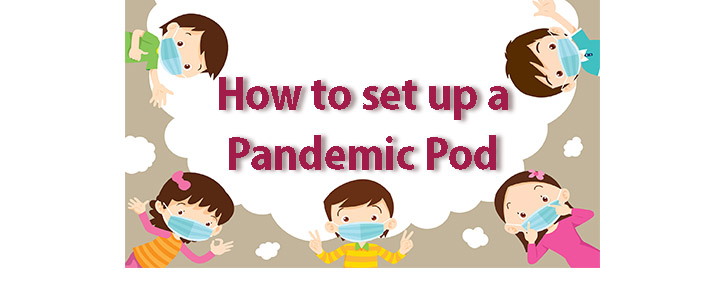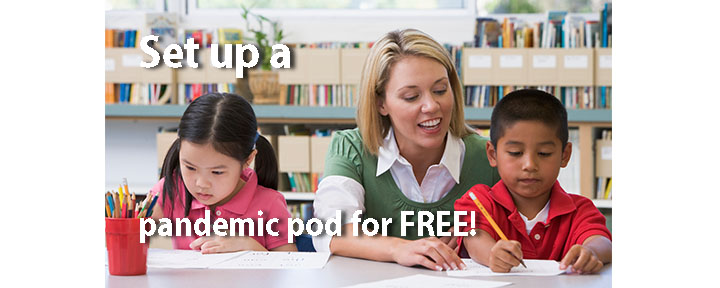
Back when my daughters were young, I created a preschool and enrichment program to give them stimulating activities with a few other children. I developed the curriculum, trained the teacher, and hosted the program in my rec room. My girls LOVED the program and their academic skills were off the charts. I loved being able to set up the lesson plans to ensure that they were challenged and intrigued by their classes. By charging tuition to the 2-3 other families that joined the program, their contributions paid for the teacher and material expenses. It was a win-win situation for all of us.
Today, Bay Area families are scrambling to set up pandemic pods for their children to either enhance their school curriculum or to replace it. My consulting firm, Merit Educational Consultants, is helping parents set up their pandemic pods as coops (all parents contribute funds to pay for expenses), as independent programs (parents pay the hosting family to cover expenses), or as private schools (parents pay hosting family for program and/or work with Independent Studies programs for school credits.)
I’ve written a book that lays out exactly how to set up these programs and it comes complete with forms, policies, and tips. Check it out: The Millennial’s Guide to Free Child Care in Your Home. I have also written curriculum framework for all subjects starting at 18 months old to 12th grade; the high school courses are all UC A-G approved. DIY parents love customizing their family programs by utilizing the book and curriculum.
Creating a pandemic pod is similar to setting up in-home child care or starting a small homeschool. The only real difference is selecting families who share similar coronavirus safety protocols. You could imagine how this adds a new layer of complexity because there are still many unknowns about how this virus spreads and how to protect everyone.
Choosing students for your pandemic pod requires looking beyond the students themselves. You’ll need to evaluate how the family lives, who they socialize with, how they protect themselves, and most importantly, how honest they’ll be about their social interactions when not in the pod. In other words, you are interacting with everybody THEY interact with.
So if they don’t wear masks when stopping at the grocery store, it’s like you went with them to the store and didn’t wear your mask – and you may be exposing your family and the entire pod to the coronavirus. If one of the parents is having a sexual affair with someone out of the pod family group, you’re essentially in bed with their lover too. Get my drift? Now the big questions are can you trust them to tell you these private details about who they’re socializing with and can you operate your pandemic pod safely for your teacher and the students?
I’m helping families design their pandemic pods and vet students/families to find good matches. It’s best to keep pods to just 2-4 families. By doing the interviews and setting up policies as their consultant, it makes it easier for the families to discuss concerns about other family member’s activities and the overall safety of all parties. Is it worth it? We’ll see… For me back in the 90s (pre-pandemic,) it was the best decision I made for my girls, their education and their social lives.

